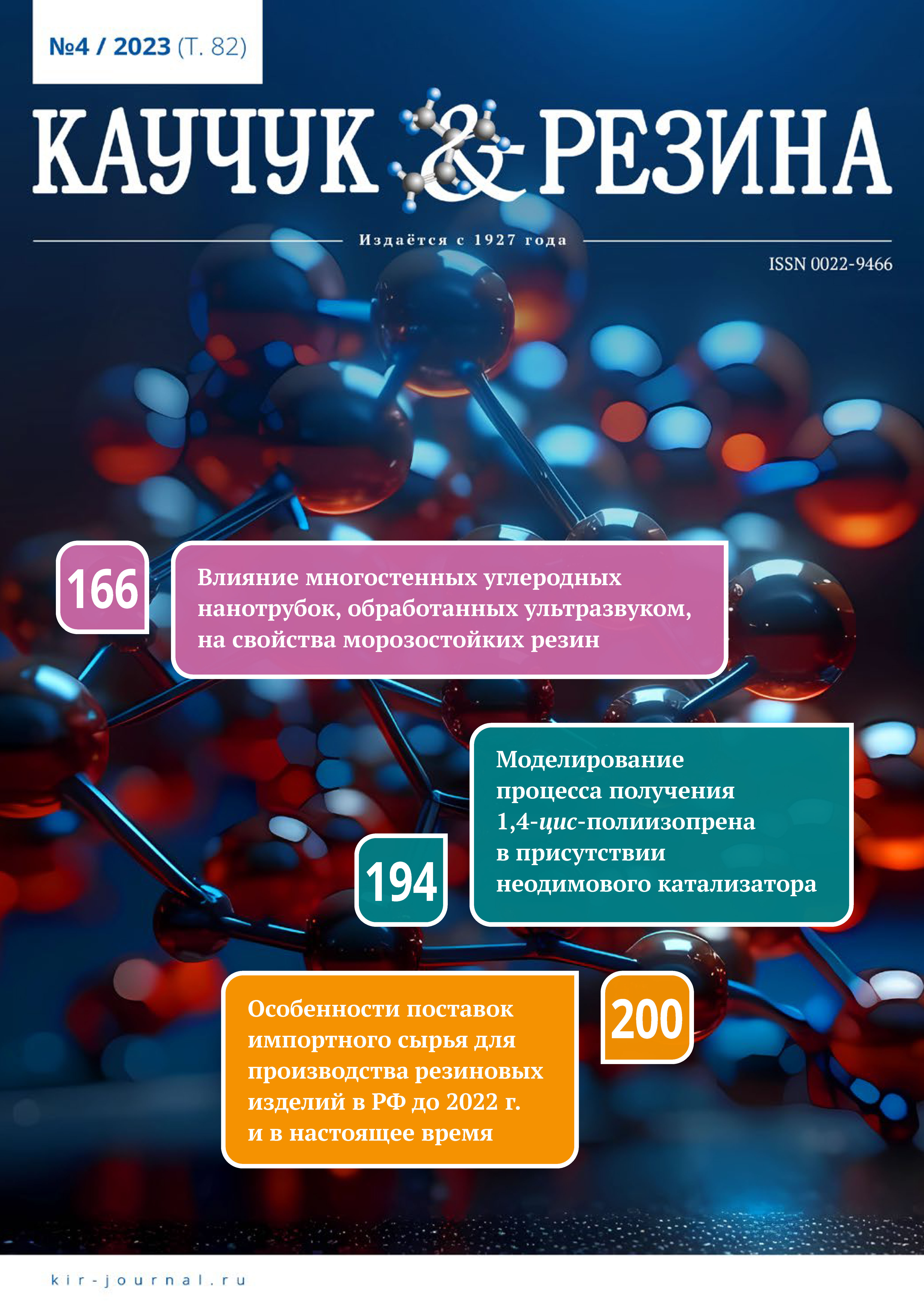The Effect of Plasticization of Isoprene Rubber on the Hardness of its Vulcanizates. Part 3. The Role of the Chemical Nature of Macromolecules
Published 2023-09-01
How to Cite
Abstract
The article is a continuation of a series of articles on the study of the effect of plasticization of isoprene rubber (SKI-3) on the hardness (H) of vulcanizates based on it. In this article, equations were obtained describing the dependences of the value of H on the molecular weight and degree of oxidative degradation, mechanocreaking and recombination of SKI-3 (α) macromolecules occurring during the plasticization of rubber. It turned out that in almost the entire range of changes in the temperature of plasticization (30–130 °C) and the duration of its conduct (30–600s), the factor α plays the main role in changing the value of H. An explanation of the previously established fact of a change in the value of the effective activation energy of processes affecting H with a change in the temperature of the SKI-3 plasticization is given. It was found that the plastification of SKI-3 generally leads to a decrease H of vulcanizates. The results of the works presented in three parts of the article are summarized.

